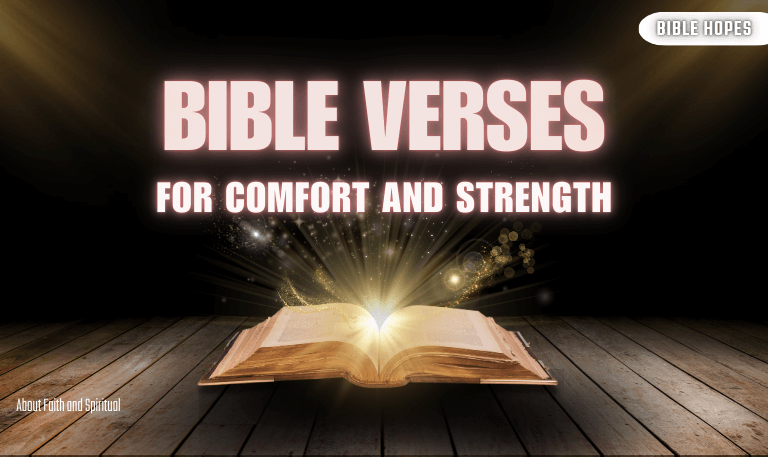Dancing has been an intrinsic part of human culture since ancient times, symbolizing joy, celebration, worship, and freedom. But what does the Bible say about dancing? Is it merely a cultural practice, or does it hold a deeper spiritual significance? This comprehensive guide explores Bible verses about dancing, unpacking the context, meaning, and lessons behind dance in Scripture, helping believers and seekers alike understand how this vibrant expression relates to faith, worship, and everyday life.
1. The Meaning of Dancing in the Bible
Dancing in the Bible is often portrayed as a spontaneous, joyous response to God’s blessings, victories, and presence. It serves as a physical manifestation of inner joy and gratitude. Unlike some modern perceptions that may associate dancing solely with entertainment or secular culture, biblical dancing frequently reflects praise, worship, celebration, and communal unity.
2. Historical and Cultural Context of Dancing in Biblical Times
To fully understand biblical references to dancing, it’s important to recognize the cultural backdrop of ancient Israel and neighboring civilizations.
Dance as Worship: In ancient Israel, dance was integrated into religious ceremonies, celebrations of victory, and seasonal festivals.
Forms of Dance: Biblical dances ranged from joyful, exuberant group dances to solemn ritualistic movements.
Gender Roles: Both men and women participated in dance, sometimes separately, as seen with Miriam leading women after crossing the Red Sea (Exodus 15:20).
Symbolism: Dance often symbolized freedom, restoration, and covenantal joy with God.
This cultural understanding reveals that dancing was a respected and significant spiritual practice rather than mere entertainment.
Read Also: Bible Verses About Acceptance
3. Top Bible Verses About Dancing
Here are some of the most prominent Bible verses that mention or allude to dancing:
Exodus 15:20-21 – Miriam’s dance of victory after crossing the Red Sea
2 Samuel 6:14 – David dancing before the Ark of the Covenant
Psalm 149:3 – Praise God with dancing and music
Psalm 30:11 – God turning mourning into joyful dancing
Ecclesiastes 3:4 – A time to dance
Jeremiah 31:13 – God’s promise of joy and dancing
Psalm 150:4 – Praise Him with dancing
4. In-Depth Look at Key Bible Verses on Dancing
Exodus 15:20-21
“Then Miriam the prophetess, Aaron’s sister, took a timbrel in her hand, and all the women followed her with timbrels and dancing.”
Miriam’s dance celebrates God’s deliverance of Israel from Egypt. This dance expresses triumph and collective gratitude.
2 Samuel 6:14
“David, wearing a linen ephod, danced before the Lord with all his might.”
David’s uninhibited dance before the Ark reflects heartfelt worship. Though some mocked him, David prioritized joy in God’s presence over public opinion.
Psalm 149:3
“Let them praise his name with dancing and make music to him with tambourine and harp.”
This verse encourages believers to praise God actively and joyfully, integrating music and dance as spiritual worship.
Psalm 30:11
“You turned my wailing into dancing; you removed my sackcloth and clothed me with joy.”
Here, dancing symbolizes God’s transformative power, turning sorrow into joy.
Ecclesiastes 3:4
“A time to weep and a time to laugh, a time to mourn and a time to dance.”
This famous verse reminds us of life’s seasons and the appropriateness of dance as an expression of joy.
Jeremiah 31:13
“Then young women will dance and be glad, young men and old as well.”
A prophetic promise of restored joy and celebration in God’s renewed covenant.
5. When Does the Bible Warn About Dancing?
While many passages celebrate dance, some imply caution:
Excess and Immorality: Dancing in contexts associated with lust or pagan worship is criticized (e.g., Exodus 32:19-25, where Israel’s golden calf worship involved revelry).
2 Samuel 6:20 – Michal, David’s wife, criticized his dancing, possibly because it was seen as undignified.
Interpretation: The Bible warns against dance that leads to immoral behavior or distracts from pure worship. Context and intention matter deeply.
6. Dancing as an Act of Worship
Dance in worship connects body, mind, and spirit, making praise a holistic experience.
Biblical Examples: Miriam and David exemplify worship through dance.
Modern Application: Many churches embrace dance as worship, incorporating choreographed or spontaneous movement in services.
Scriptural Support: Psalm 149:3 and Psalm 150:4 explicitly call for praising God with dance.
7. Dancing and Spiritual Freedom
Dance often symbolizes liberation in the Bible:
Celebrating freedom from slavery in Egypt (Exodus 15)
Expressing joy in restoration (Psalm 30:11)
Embracing new life in Christ (New Testament themes of freedom and joy)
Dancing is an embodiment of the freedom believers experience through God’s grace.
8. Bible Verses About Dancing for Children and Families
Introducing children to joyful biblical dance verses can nurture faith and happiness.
Child-friendly verses: Ecclesiastes 3:4, Psalm 149:3, Jeremiah 31:13
Teaching Ideas: Use simple dance moves with scripture readings to engage children.
Family Worship: Incorporate dancing into family devotionals for joyful expression.
9. Inspirational Verses to Share and Reflect On
Perfect for encouragement or social media:
“Let them praise his name with dancing.” – Psalm 149:3
“You turned my wailing into dancing.” – Psalm 30:11
“A time to dance.” – Ecclesiastes 3:4
These verses remind us to embrace joy and celebrate God’s goodness daily.
10. Dancing in Celebrations and Weddings
Dance is part of biblical festivities:
Weddings featured music and dance (John 2:1-11, the Wedding at Cana)
National celebrations like the Feast of Tabernacles included joyful dance.
Dancing unites communities in collective worship and rejoicing.
11. Applying Bible Verses About Dancing to Your Life
Meditate on verses to cultivate joy.
Incorporate dance into personal or communal worship.
Use dance to express gratitude during celebrations and milestones.
Balance reverence and joy, ensuring dance honors God.
12. New Testament References to Dancing
Dance is less explicitly mentioned in the New Testament, but the principles of joyful worship and freedom echo:
Luke 15:25 – The older son dances or is joyful when the prodigal returns.
Revelation 19:7-8 – Symbolic of joyful celebration in heaven.
Emphasis on spiritual joy aligns with dance as a metaphor.
13. Biblical Stories Featuring Dance
Miriam and the women dancing after crossing the Red Sea (Exodus 15).
David dancing before the Ark (2 Samuel 6).
Jesus attending a wedding feast (John 2) where music and dance likely occurred.
These narratives teach lessons about expressing gratitude and worship with the whole self.
14. Common Misconceptions About Biblical Dancing
Myth: All dancing is sinful.
Truth: Biblical dance is often holy and joyful but warns against immoral contexts.
Myth: Dance is only for entertainment.
Truth: Dance in the Bible is a spiritual and communal act.
15. Prayer and Reflection Inspired by Dancing Verses
Example prayer:
“Lord, help me to praise You with all my heart, mind, and body. Teach me to dance in joy for Your goodness and grace. May my life be a continual dance of worship to You.”
16. Dancing and Community in the Bible
Dance fosters unity:
Group dances strengthen bonds (Exodus 15:20).
Celebrations invite communal participation.
Modern churches use dance to build spiritual family connections.
Read Also: Bible Verses About Breaking Chains
17. Dance Compared: Biblical vs. Other Ancient Cultures
Biblical dance focuses on worship and God’s glory.
Pagan dances sometimes involved fertility rites or idolatry.
Biblical dance is distinguished by its purpose and intention.
18. Bible Verses About Dancing and Healing
Dance symbolizes restoration:
Psalm 30:11 shows joy replacing mourning.
Dance as a physical expression of healing and renewed spirit.
Bible Verses About Dancing FAQs
Q1: Is dancing always positive in the Bible?
A1: Mostly yes, when connected to worship and joy. However, it can be warned against if linked to immoral behavior.
Q2: Can Christians dance?
A2: Yes, dance can be a form of worship and joyful expression when done respectfully.
Q3: What does the Bible say about dancing at weddings?
A3: Weddings were occasions of celebration involving music and likely dance (John 2:1-11).
Q4: Are there Bible verses that warn against dancing?
A4: Some imply caution when dance leads to lust or pagan worship, emphasizing context.
Q5: How should Christians approach dancing today?
A5: With joy, reverence, and awareness of their motives and setting.
Q6: What is the meaning of David’s dance in the Bible?
A6: It symbolizes uninhibited worship and celebration before God.
Q7: Does the Bible support dancing as worship?
A7: Yes, several psalms encourage praising God with dance.
Q8: How can I teach children about dancing in the Bible?
A8: Use simple verses and joyful movement to connect faith with fun.
Q9: What does Ecclesiastes 3:4 mean about dancing?
A9: Life has seasons, and dancing is appropriate in times of joy.
Q10: Are there New Testament references to dancing?
A10: Indirect references and symbolic joy align with dance principles.
Conclusion
Dancing in the Bible is a rich, multifaceted expression of joy, worship, and spiritual freedom. Whether in celebration of victory, restoration, or everyday praise, dance embodies a wholehearted connection to God. As believers, embracing the biblical view of dance can enrich worship, deepen joy, and foster community.
![[2025] Bible Verses About Dancing | Spiritual Significance 1 [2025]-Bible-Verses-About-Dancing-Spiritual-Significance](https://biblehopes.com/wp-content/uploads/2025/05/2025-Bible-Verses-About-Dancing-Spiritual-Significance.png)
![15 Bible Verses About Wicked Government [2025 Explained] 3 15-Bible-Verses-About-Wicked-Government-[2025-Explained]](https://biblehopes.com/wp-content/uploads/2025/05/15-Bible-Verses-About-Wicked-Government-2025-Explained.png)

